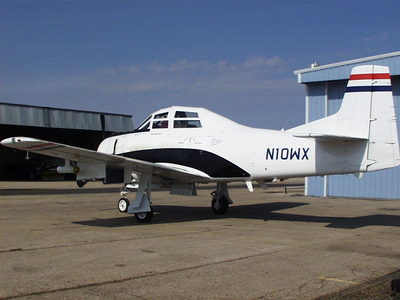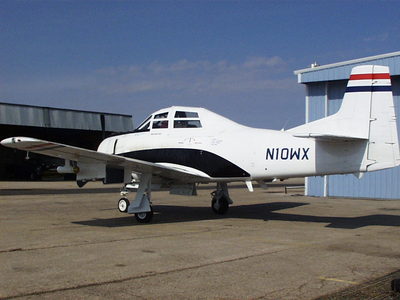Armored T-28 Research Aircraft Facility
Data Acquisition System
 |
The last data acquisition system on the T-28 was installed in 1989. Its core was an IBM PC-AT-compatible industrial-grade microcomputer. It had 32 analog input channels and used 16-bit analog-to-digital converters. There are also interfaces to accept digital data from the IAS hail spectrometer, one PMS FSSP or 1D probe, and one PMS 2D imaging probe. Data were stored on a 40-MB streaming tape cartridge. Most data were sampled once per second, but some variables (e.g., electric fields) were sampled at rates up to 20 per second. The pilot could enter event codes and had the ability to reboot the data system in flight should a failure occur. He also had a display screen in the cockpit to allow him to monitor critical data.
A small audio stereo recorder was carried to record pilot comments on one track and the sounds of hailstone impacts on the windscreen of the aircraft on the other track. The volume swept out by the windscreen is about the same as the sampling volume of the hail spectrometer, so two somewhat comparable modes of hail detection were available. A filter was inserted in the hail impact channel to reduce the masking effects of the engine noise. This recorder proved to be extremely valuable in providing supporting qualitative data for the other instruments. It also allowed the pilot to concentrate on flying the aircraft and make subjective observations without the burden of taking notes during the penetrations.
An air-to-ground telemetry system, a Data Radio G5S1SSSG system including a 2 W transmitter operating on 418 Mhz, a receiver, and a PC for display of telemetered data on the ground, was carried on the T-28. It transmitted digital data to the ground at 4800 baud using a network protocol that allowed several telemetry systems to share the same frequency. The standard frequency was one also used by the NCAR "NATS" telemetry system. Other frequencies could also be used, if necessary, at additional expense for factory modification.
Capability existed for quick-look data reduction on the ground after a flight. Data was able to be listed or plotted within roughly two hours of landing.
